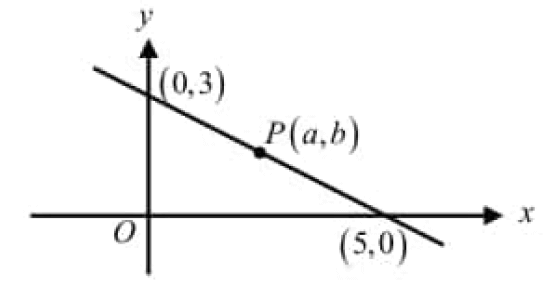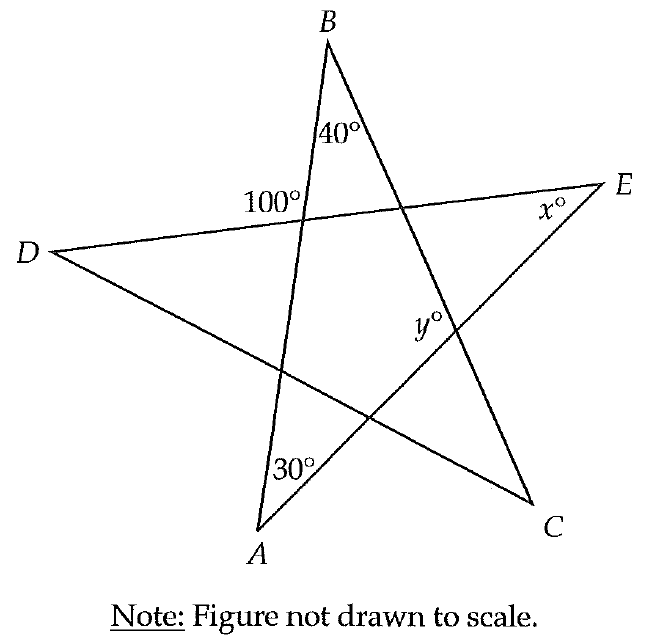QUADRATIC FUNCTION AXIS OF SYMMETRY AND VERTEX WORKSHEET
Find the axis of symmetry and vertex for the following quadratic functions.
Problem 1 :
y = x2 - 2x - 35
Problem 2 :
y = -2x2 + 6x - 3
Problem 3 :
y = 2x2 - 16x + 3
Problem 4 :
y = -x2 - 4x + 1
Problem 5 :
y = 3x2 - 6x + 4
Problem 6 :
y = 3(x - 1)2 + 3
Problem 7 :
y = 2(x - 7)2 - 2
Problem 8 :
y = -2(x + 2)2 + 5
Problem 9 :
y = (x + 3)2 - 2
Problem 10 :
y = (x - 4)2

Answers
1. Answer :
y = x2 - 2x - 35
The given quadratic function is in standard form.
Comparing y = ax2 + bx + c and y = x2 - 2x - 35, we get
a = 1, b = -2 and c = -35
Axis of symmetry :
x = 1
From the axis of symmetry x = 1, the x-coordinate of the vertex is 1.
In the given quadratic function, substitute x = 1 to get the y-coordinate of the vertex.
y = 12 - 2(1) - 35
y = 1 - 2 - 35
y = -36
Vertex :
(1, -36)
2. Answer :
y = -2x2 + 6x - 3
The given quadratic function is in standard form.
Comparing y = ax2 + bx + c and y = -2x2 + 6x - 3, we get
a = -2, b = 6 and c = -3
Axis of symmetry :
From the axis of symmetry x = ³⁄₂, the x-coordinate of the vertex is ³⁄₂.
In the given quadratic function, substitute x = ³⁄₂ to get the y-coordinate of the vertex.
Vertex :
3. Answer :
y = 2x2 - 16x + 3
The given quadratic function is in standard form.
Comparing y = ax2 + bx + c and y = 2x2 - 16x + 3, we get
a = 2, b = -16 and c = 3
Axis of symmetry :
x = 4
From the axis of symmetry x = 4, the x-coordinate of the vertex is 4.
In the given quadratic function, substitute x = 4 to get the y-coordinate of the vertex.
y = 2(4)2 - 16(4) + 3
y = 2(16) - 64 + 3
y = 32 - 64 + 3
y = -29
Vertex :
(4, -29)
4. Answer :
y = -x2 - 4x + 1
The given quadratic function is in standard form.
Comparing y = ax2 + bx + c and y = -x2 - 4x + 1, we get
a = -1, b = -4 and c = 1
Axis of symmetry :
x = 2
From the axis of symmetry x = 2, the x-coordinate of the vertex is 2.
In the given quadratic function, substitute x = 2 to get the y-coordinate of the vertex.
y = -(2)2 - 4(2) + 1
y = -4 - 8 + 3
y = -9
Vertex :
(2, -9)
5. Answer :
y = 3x2 - 6x + 4
The given quadratic function is in standard form.
Comparing y = ax2 + bx + c and y = 3x2 - 6x + 4, we get
a = 3, b = -6 and c = 4
Axis of symmetry :
x = 1
From the axis of symmetry x = 1, the x-coordinate of the vertex is 1.
In the given quadratic function, substitute x = 1 to get the y-coordinate of the vertex.
y = 3(1)2 - 6(1) + 4
y = 3(1) - 6 + 4
y = 3 - 6 + 4
y = 1
Vertex :
(1, 1)
6. Answer :
y = 3(x - 1)2 + 3
The given quadratic function is in vertex form.
Comparing y = a(x - h)2 + k and y = 3(x - 1)2 + 3, we get
h = 1 and k = 3
Axis of symmetry :
x = h
x = 1
Vertex :
(h, k) = (1, 3)
7. Answer :
y = 2(x - 7)2 - 2
y = 2(x - 7)2 + (-2)
The above quadratic function is in vertex form.
Comparing y = a(x - h)2 + k and y = 2(x - 7)2 + (-2), we get
h = 7 and k = -2
Axis of symmetry :
x = h
x = 7
Vertex :
(h, k) = (7, -2)
8. Answer :
y = -2(x + 2)2 + 5
y = -2[x - (-2)]2 + 5
The above quadratic function is in vertex form.
Comparing y = a(x - h)2 + k and y = -2[x - (-2)]2 + 5, we get
h = -2 and k = 5
Axis of symmetry :
x = h
x = -2
Vertex :
(h, k) = (-2, 5)
9. Answer :
y = (x + 3)2 - 2
y = [x - (-3)]2 + (-2)
The above quadratic function is in vertex form.
Comparing y = a(x - h)2 + k and y = [x - (-3)]2 + (-2), we get
h = -3 and k = -2
Axis of symmetry :
x = h
x = -3
Vertex :
(h, k) = (-3, -2)
10. Answer :
y = (x - 4)2
y = (x - 4)2 + 0
The above quadratic function is in vertex form.
Comparing y = a(x - h)2 + k and y = (x - 4)2 + 0, we get
h = 4 and k = 0
Axis of symmetry :
x = h
x = 4
Vertex :
(h, k) = (4, 0)
Kindly mail your feedback to v4formath@gmail.com
We always appreciate your feedback.
©All rights reserved. onlinemath4all.com
Recent Articles
-
Digital SAT Math Problems and Solutions (Part - 134)
Apr 02, 25 12:40 AM
Digital SAT Math Problems and Solutions (Part - 134) -
SAT Math Resources (Videos, Concepts, Worksheets and More)
Apr 02, 25 12:35 AM
SAT Math Resources (Videos, Concepts, Worksheets and More) -
Digital SAT Math Problems and Solutions (Part 135)
Apr 02, 25 12:32 AM
Digital SAT Math Problems and Solutions (Part 135)

